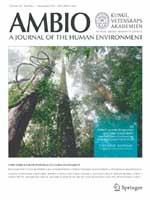Supply of international environmental public goods must meet certain conditions to be socially efficient, and several reasons explain why they are currently undersupplied. Diagnosis of the public goods failure associated with particular ecosystem services is critical to the development of the appropriate international response. There are two categories of international environmental public goods that are most likely to be undersupplied. One has an additive supply technology and the other has a weakest link supply technology. The degree to which the collective response should be targeted depends on the importance of supply from any one country. In principle, the solution for the undersupply lies in payments designed to compensate local providers for the additional costs they incur in meeting global demand. Targeted support may take the form of direct investment in supply (the Global Environment Facility model) or of payments for the benefits of supply (the Payments for Ecosystem Services model).
How to translate text using browser tools
1 November 2011
Paying for International Environmental Public Goods
Rodrigo Arriagada,
Charles Perrings
ACCESS THE FULL ARTICLE
It is not available for individual sale.
This article is only available to subscribers.
It is not available for individual sale.
It is not available for individual sale.
ecosystem services
Global environmental public
International environmental public goods
payments for ecosystem services





